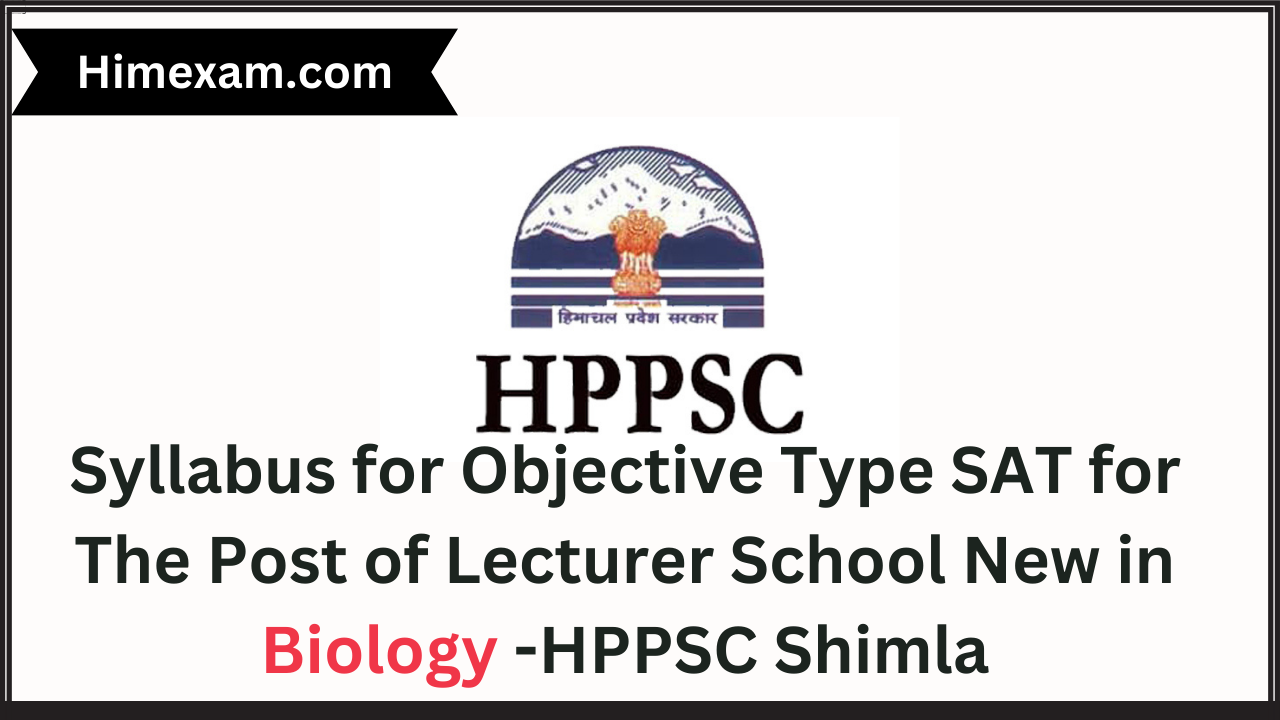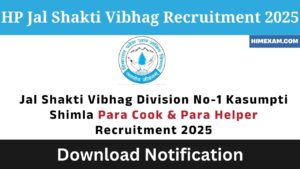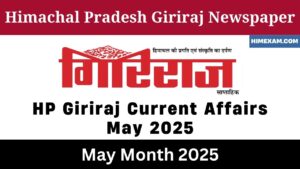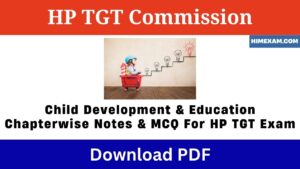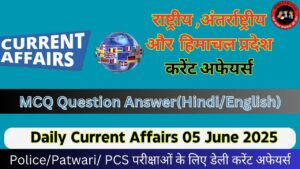Syllabus for Objective Type SAT for The Post of Lecturer School New in Biology -HPPSC Shimla
COMMON SYLLABUS FOR OBJECTIVE TYPE SUBJECT APTITUDE TEST (SAT) FOR RECRUITMENT TO POSTS OF LECTURER (SCHOOL NEW) IN BIOLOGY, CLASS-III IN THE DEPARTMENT OF HIGHER EDUCATION. THIS PAPER WILL BE OF 02 HOURS DURATION OF 100 MARKS. THE OBJECTIVE TYPE SUBJECT APTITUDE TEST (SAT) SHALL COVER FOLLOWING TOPICS.
Syllabus for Objective Type SAT for The Post of Lecturer School New in Biology -HPPSC Shimla
PART-I (Subject) 80 marks
1.Diversity I Cryptogams:Algae, fungi, lichens, bryophytes, pteridophytes-structure and reproduction from evolutionary viewpoint; Distribution of Cryptogams in India and their ecological and economic importance.Phanerogams:Gymnosperms-Pro-gymnosperms; classification, distribution, salient features, structure, and reproduction of gymnosperms- Cycadales, Ginkgoales, Coniferales and Gnetales; General account of Cycadofilicales, Bennettitales and Cordaitales; Geological time scale; Type of fossils and their study techniques. Angiosperms- Systematics, anatomy, embryology, palynology and phylogeny; Taxonomic hierarchy; International Code of Botanical Nomenclature; Numerical taxonomy and chemotaxonomy; Origin and evolution of angiosperms; Angiosperms families- Magnoliaceae, Ranunculaceae, Brassicaceae, Rosaceae, Fabaceae, Euphorbiaceae, Malvaceae, Apiaceae, Asclepiadaceae, Verbenaceae, Solanaceae, Rubiaceae, Cucurbitaceae, Asteraceae, Poaceae, Liliaceae and Orchidaceae; Stomata and their types; Glandular and non-glandular trichomes; Unusual secondary growth; Xylem and phloem differentiation; Wood anatomy; Development of male and female gametophytes, pollination, fertilization; Endosperm – its development and function; Patterns of embryo development; Polyembryony and apomixes. Classification and relationship of various phylaupto subclass; general features and life history:Protozoa, Paramaecium, Monocystis, Plasmodium, and Leishmania, Porifera, Cnidaria,Coral reefs and their formation, Obelia, Aurelia, Platyhelminthes- Fasciola and Taenia, Nemathelminthes- Ascaris, and Wuchereria, Annelida- Coelom and metamerism; Polychaetes- Nereis, earthworm and leach, Arthropoda- Crustacea,Arthropods, metamorphosis in insect and its hormonal regulation, social behavior of Apis and termites, Mollusca-Lamellidens, Pila and Sepia, Echinodermata- Asterias, Protochordata-Branchiostoma and Herdmania, PiscesAmphibia, Reptilia, Aves, Mammalia, Comparative functional anatomy of various systems of vertebrates (integument and its derivatives, endoskeleton, locomotory organs, digestive system, respiratory system, circulatory system including heart and aortic arches, urinogenital system, brain and sense organs).
3. Microbiology and Plant Pathology: Structure and reproduction/multiplication of viruses, viroids, bacteria, fungi and mycoplasma; Applications of microbiology in agriculture, industry, medicine and in control of soil and water pollution; Important crop diseases caused by viruses, bacteria, mycoplasma, fungi and nematodes; Modes of infection and dissemination; Molecular basis of infection and disease resistance/defence; Physiology of parasitism and control measures; Fungal toxins; Modelling and disease forecasting; Plant quarantine.
4. Plant Resource Development: Domestication and introduction of plants; Origin of cultivated plants; Plants as sources of food, fodder, fibre, spices, beverages,edible oils, drugs, narcotics, insecticides, timber, gums, resins and dyes, latex, cellulose, starch and its products; Perfumery; Importance of Ethnobotany in Indian context; Energy plantations; Botanical Gardens and Herbaria.
5. Developmental Biology: Gametogenesis; spermatogenesis, the composition of semen, in vitro and in vivo capacitation of mammalian sperm, Oogenesis, totipotency; fertilization, morphogenesis, and morphogen, blastogenesis, the establishment of body axes formation, fate map, Gastrulation in frog and chick; genes in development in chick, homeotic genes, development of eye and heart, placenta in mammals, Cell lineage, cell-to-cell interaction, Genetic and induced teratogenesis, the role of thyroxine in control of metamorphosis in amphibia, paedogenesis, and neoteny, cell death, aging, Developmental genes in man, in vitro fertilization and embryo transfer, cloning, Stem cells, Biogenetic law.
6. Cell Biology: Techniques of cell biology; Prokaryotic and eukaryotic cells-structural and ultrastructural details; Structure and function of extracellular matrix (cell wall), membranes-cell adhesion, membrane transport and vesicular transport; Structure and function of cell organelles (chloroplasts, mitochondria, ER, dictyosomes ribosomes, endosomes, lysosomes, peroxisomes); Cytoskeleton and microtubules; Nucleus, nucleolus, nuclear pore complex; Chromatin and nucleosome; Cell signaling and cell receptors; Signal transduction; Mitosis and meiosis; Molecular basis of cell cycle; Numerical and structural variations in chromosomes and their significance; Chromatin organization and packaging of genome; Polytene chromosomes; B-chromosomes’ structure, behaviour and significance.
7. Genetics, Molecular Biology and Evolution: Development of genetics; Gene versus allele concepts (Pseudoalleles); Quantitative genetics and multiple factors; Incomplete dominance, polygenic inheritance, multiple alleles; Linkage and crossing over; Methods of gene mapping, including molecular maps (idea of mapping function); Sex chromosomes and sex-linked inheritance, sex determination and molecular basis of sex differentiation; Mutations (biochemical and molecular basis); Cytoplasmic inheritance and cytoplasmic genes (including genetics of male sterility); Structure and synthesis of nucleic acids and proteins;Genetic code and regulation of gene expression; Gene silencing; Multigene families; Organic evolutionevidence, mechanism and theories. Role of RNA in origin and evolution.
8. Morphogenesis, Biotechnology and Biostatistics: Totipotency, polarity, symmetry and differentiation; Cell, tissue, organ and protoplast culture; Somatic hybrids and Cybrids; Micropropagation; Somaclonal variation and its applications; Pollen haploids, embryo rescue methods and their applications.Methods of plant breeding- introduction, selection and hybridization (pedigree, backcross, mass selection, bulk method); Mutation, polyploidy, male sterility and heterosis breeding; Use of apomixes in plant breeding; DNA sequencing; Genetic engineering- methods of transfer of genes; Transgenic crops and biosafety aspects; Development and use of molecular markers in plant breeding; Tools and techniques -probe, southern blotting, DNA fingerprinting, PCR and FISH. Standard deviation and coefficient of variation (CV); Tests of significance (Z-test, t-test and chi-square test); Probability and distributions (normal, binomial and Poisson); Correlation and regression.
9. Physiology and Biochemistry Water relations, mineral nutrition and ion transport, mineral deficiencies; Photosynthesisphotochemical reactions; photophosphorylation and carbon fixation pathways; C-3, C-4 and CAM pathways; Mechanism of phloem transport; Respiration (anerobic and aerobic, including fermentation), electron transport chain and oxidative phosphorylation; Photorespiration; Chemiosmotic theory and ATP synthesis; Structure and role of carbohydrates, fats, fatty acids and cholesterol, proteins and amino-acids, nucleic acids;Lipid metabolism; Nitrogen fixation and nitrogen metabolism; Enzymes, coenzymes; enzyme types and mechanisms of action, Vitamins, Energy transfer and energy conservation; Importance of secondary metabolites; Pigments as photoreceptors (plastidial pigments and phytochrome); Plant movements; Photoperiodism and flowering, vernalization, senescence; Growth substances- their chemical nature, role and applications in agri-horticulture; Growth indices, growth movements; Stress physiology (heat, water, salinity, metal); Fruit and seed physiology; Dormancy, storage and germination of seed; Fruit ripening- its molecular basis and manipulation. Composition and constituents of blood; blood groups and Rh factor in man, factors and mechanism of coagulation, iron metabolism, acid-base balance, thermo-regulation, anticoagulants;Haemoglobin-composition, types and role in transport of oxygen and carbon dioxide; Digestion and absorption-role of salivary glands, liver, pancreas, and intestinal glands; Excretion- nephron and regulation of urine formation; Osmoregulation and excretory product; Muscles-types, mechanism of contraction of skeletal muscles; Neuron- nerve impulse – its conduction and synaptic transmission, neurotransmitters, vision, hearing, and olfaction in man.
Concept of ecosystem; Ecological factors; Concepts and dynamics of community; Plant succession; Concept of biosphere; Ecosystems; Conservation; Pollution and its control (including phytoremediation); Plant indicators; Environment (Protection) Act. Forest types of India-Ecological and economic importance of forests, afforestation, deforestation and social forestry; Endangered plants, endemism, IUCN categories, Red Data Books; Biodiversity and its conservation; Protected Area Network; Convention on Biological Diversity; Farmers Rights and Intellectual Property Rights; Concept of Sustainable Development; Biogeochemical cycles; Global warming and climatic change; Invasive species; Environmental Impact Assessment; Phytogeographical regions of India.Population; characteristics, population dynamics, population stabilization, Biodiversity and diversity conservation of natural resources, Wildlife of India, Remote sensing for sustainable development, Environmental biodegradation, pollution, and its impact on the biosphere and its prevention.
Part-II (B.Ed. portion) 20 marks
Foundation of Education System
- Concept and Nature of Knowledge, Knowledge Acquiring Process.
- Indian Knowledge System; Vedic Education System, Buddhist Education System
- Concept of Education; Meaning, Nature, Modes of Education, Objectives of Education,
- Approaches to Education.
- Philosophical, Psychological, Sociological and Technological Basis of Education
- (Meaning and Needs)
- Concept of important Variables: Personality, Intelligence, Creativity, Academic
- Achievement, Problem Solving Ability
Teacher Education and Related Aspects:-
- Concept of Teacher Education, Historical Aspects of Teacher Education in India, Scope of Teacher Education, Types and Levels of Teacher Education Programmes.
- Teacher and Teaching related Concepts, Learner and Learning Related Concepts,
- Relation between Teaching and Learning, Learning Environment, Pillars of Learning.
- Challenges in the field of Teacher Education (Discussion with reference to NEP 2020 also)
Pedagogy and Teaching Learning Experiences:-
- Communication Skills and its Use
- Models of Teaching; Advance organizer, Concept Attainment, Information Processing, Inquiry Training
- Methods of Teaching
- Preparation and Use of Teaching Learning Material
Information Technology in Teaching Learning Process
- ICT; Its meaning and use in Teaching Learning Process
- Concept of Open Educational Resources, SWAYAM and MOOCs
- Digital Initiatives in School Education by Government of India
More Pages:-
हेलो दोस्तों ,आपका हमारी वेबसाइट Himexam.com पर स्वागत है। जैसा की आपको पता है हमारी वेबसाइट Himexam.com आपको समय-समय पर सभी HP Govt Jobs & All India Govt Jobs की Notifications प्रदान करवाती है। साथ ही साथ Himachal Pradesh Exam Previous Paper और Himachal Pradesh GK ,Himachal Pradesh & National +International Current Affairs के सभी नोट्स मुफ्त उपलब्ध करवाते है। हमारी वेबसाइट के अलग अलग प्लेटफार्म पर pages & Group बने है जैसे की facebook ,Telegram और Instagram .. अगर आप हिमाचल के किसी भी पेपर की तैयारी कर रहे हो तो जल्दी से इन groups के साथ जुड़ जाएं इनके लिंक नीचे table में दिए गए है।
Join Us:-
| Like Our Facebook Page | Click here |
| Join Us oN Telegram | Click here |
| Join Us On Instagram | Click Here |

